Recipe: Darshana Muzumdar
Serves 2 as part of a traditional Indian meal
This is a wild flower that’s a delicacy in rural India and often flowers in the months of February though it can sometimes be found at other times of the year. It’s cooked in many ways just like any other vegetable. It can be made as simple as with just cumin seeds, turmeric, red chilli powder and salt or more elaborately with cumin seeds, onions, ginger-garlic paste, green chillies, tomatoes, coriander powder, asafoetida, turmeric, red chilli powder, and garam masala. Some people use a little roasted besan, and others add freshly grated coconut to counter the bitter taste it may sometimes have. The recipe below includes soaked moong dal and roasted peanut powder that are typically used in many vegetable dishes in rural Maharashtra. It can also be cooked in a Jain friendly manner.
Ingredients
- 10-12 hadga flowers
- ¼ cup or less moong dal
- ½ tsp cumin seeds
- 5 cloves garlic
- 1 small onion
- 1 tomato
- ½ tsp kala masala or garam masala
- 1½ tbsp roasted and powdered peanuts
- 1 tbsp groundnut oil
- salt to taste
Method
- Wash and soak the moong dal for at least 15 minutes.
- Remove the stigma in the absolute middle of the flower as it makes the sabji bitter.
- Remove the stem of each flower if it is still attached, wash the flowers and chop them into 4 or 5 pieces.
- Chop the garlic, onion and tomato into as big pieces as you prefer and keep aside ready to use.
- Heat the oil in a thick bottomed steel pan and add the cumin seeds.
- Once they crackle, add the garlic, sauté it for around 30 seconds and add the chopped onion. Sauté it till it is translucent and soft.
- Add the tomato, mix it well, cover the pot and cook for a minute so the tomato becomes soft.
- Add the kala masala, drained moong dal, and the chopped flowers. Mix it well and cook it for a couple of minutes. Add a few tablespoons of water if it is too dry.
- Add the peanut powder, mix it well and serve with rotis or as part of a traditional Indian meal.
For the Whole-Food Plant-Based (WFPB) version:
Use unrefined salt like rock salt.
Do not use oil. Add a little salt to the chopped onion and set it aside to sweat for 15 minutes. Dry roast the cumin and add the onion. Sauté it till it is soft and translucent. Add a couple of tablespoons of water if required. Continue with the rest of the recipe as above.
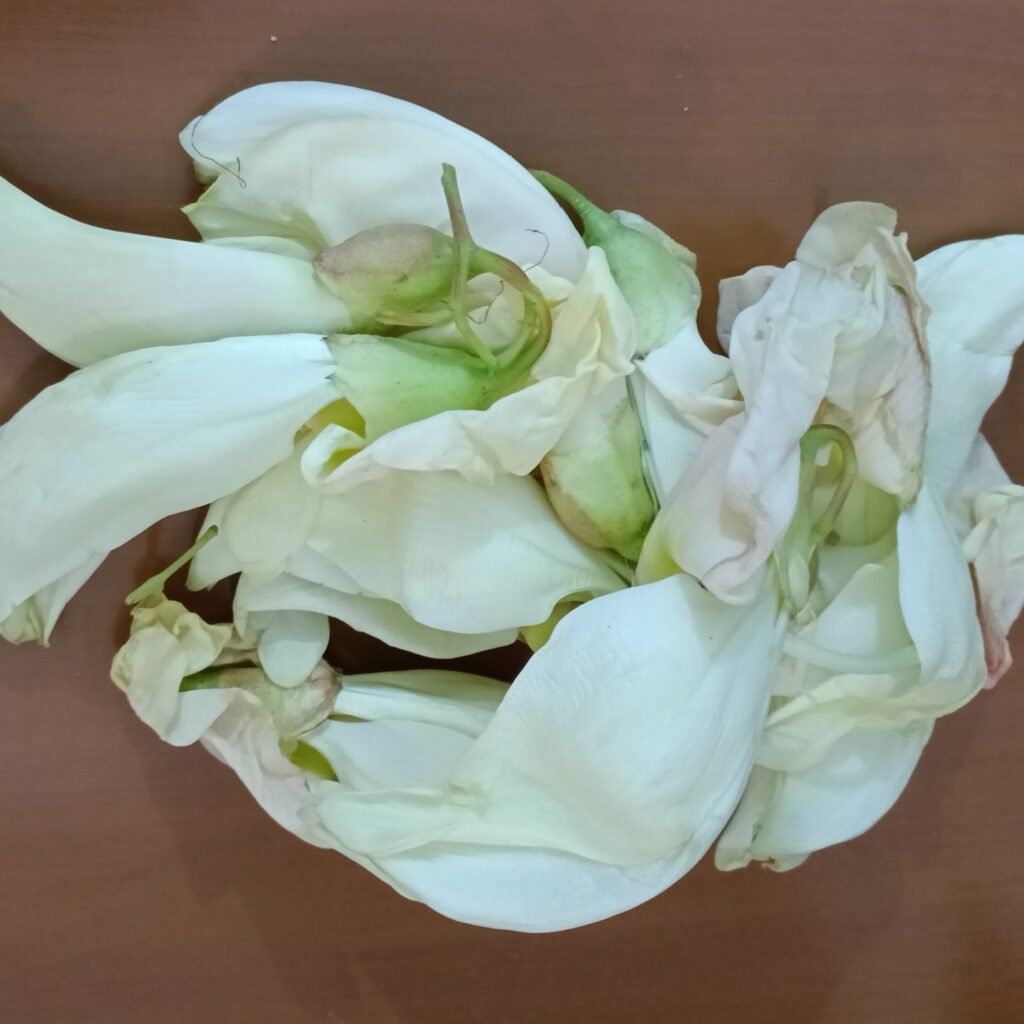
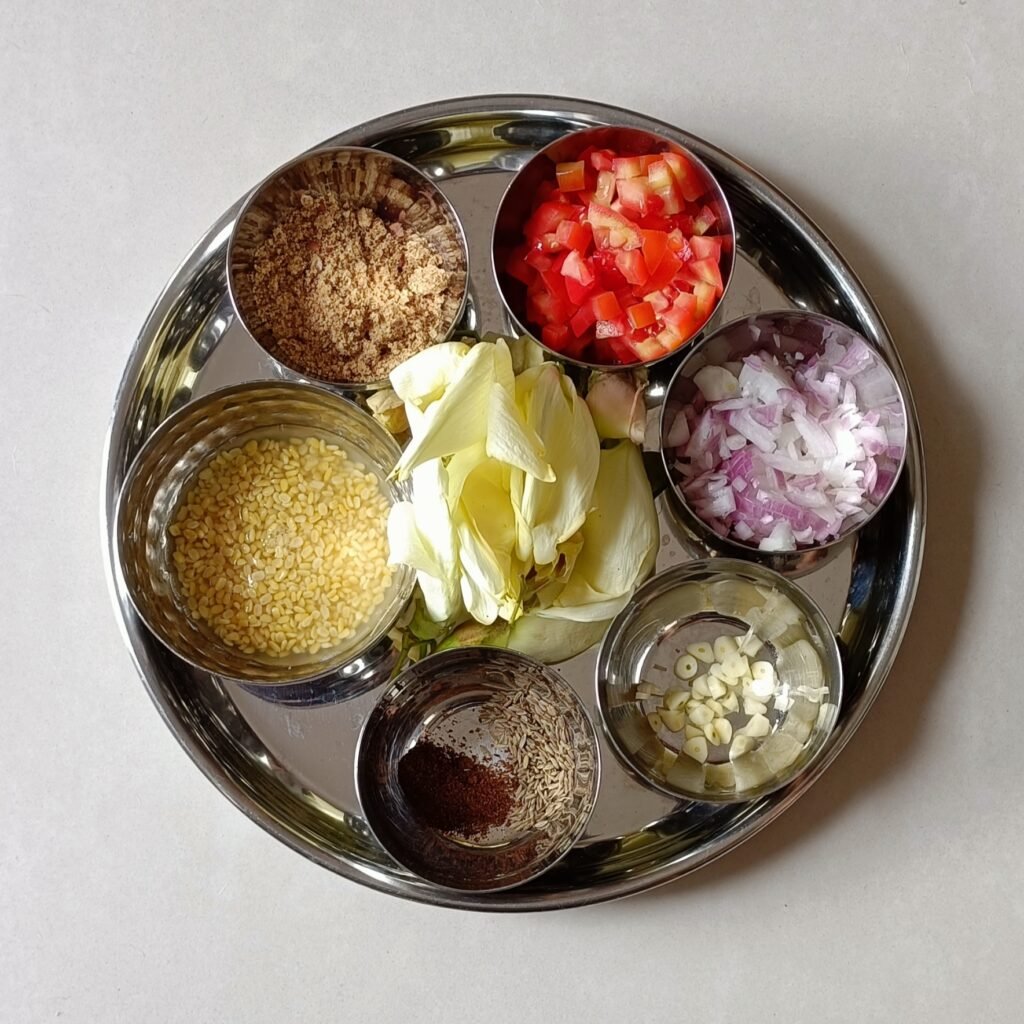
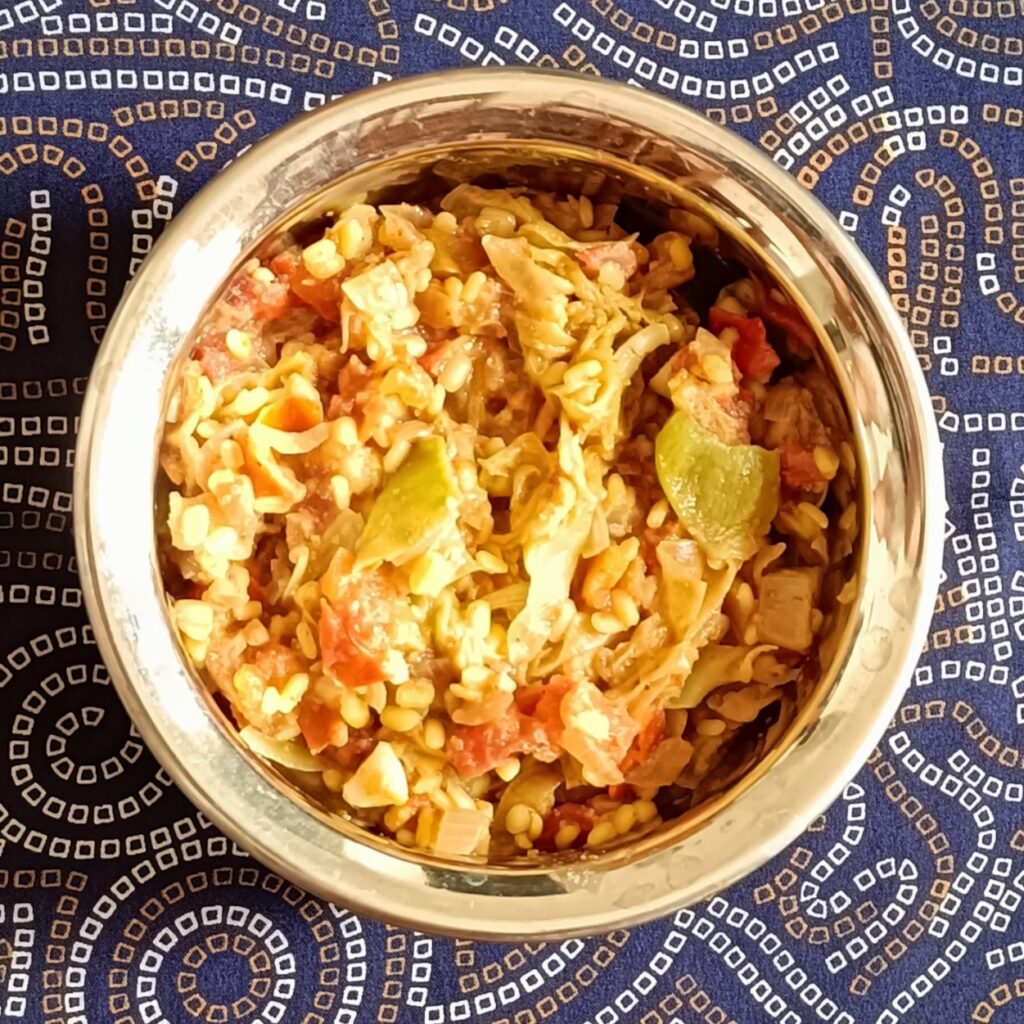
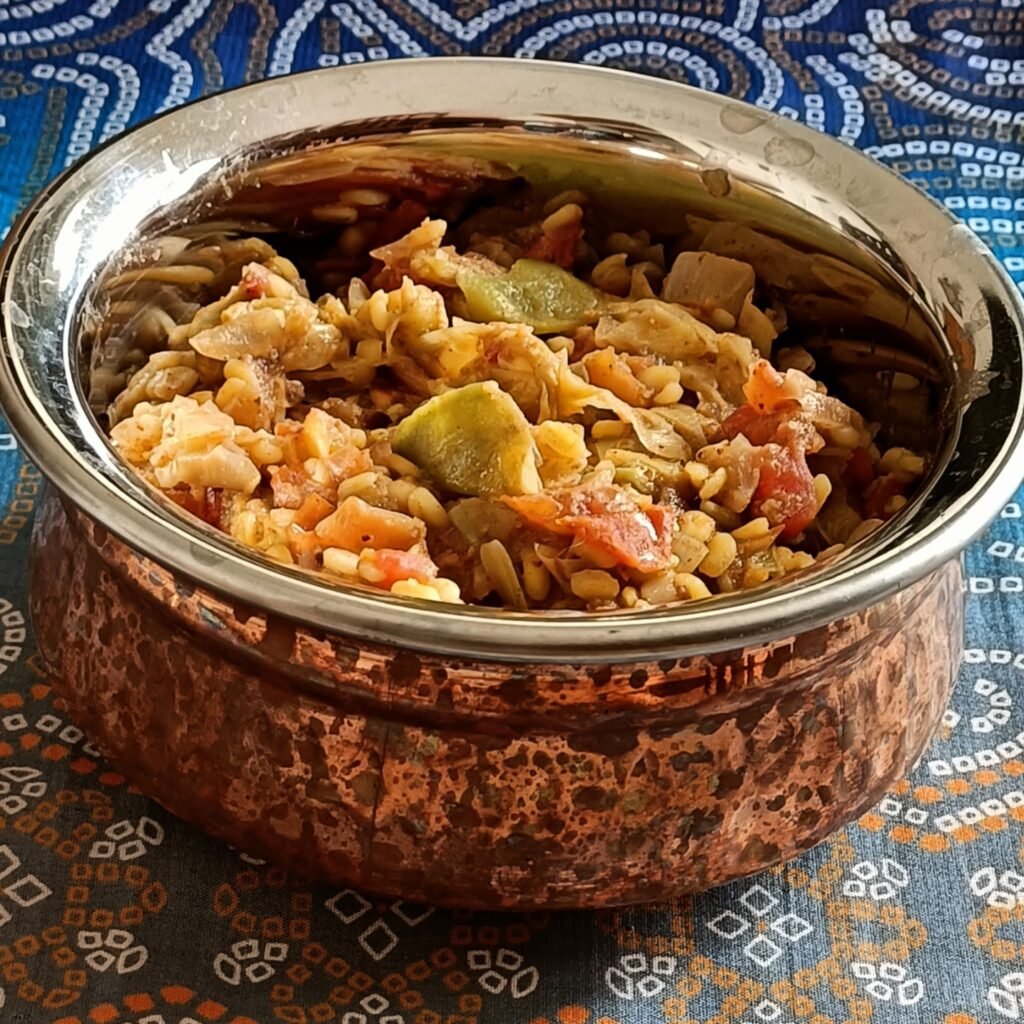
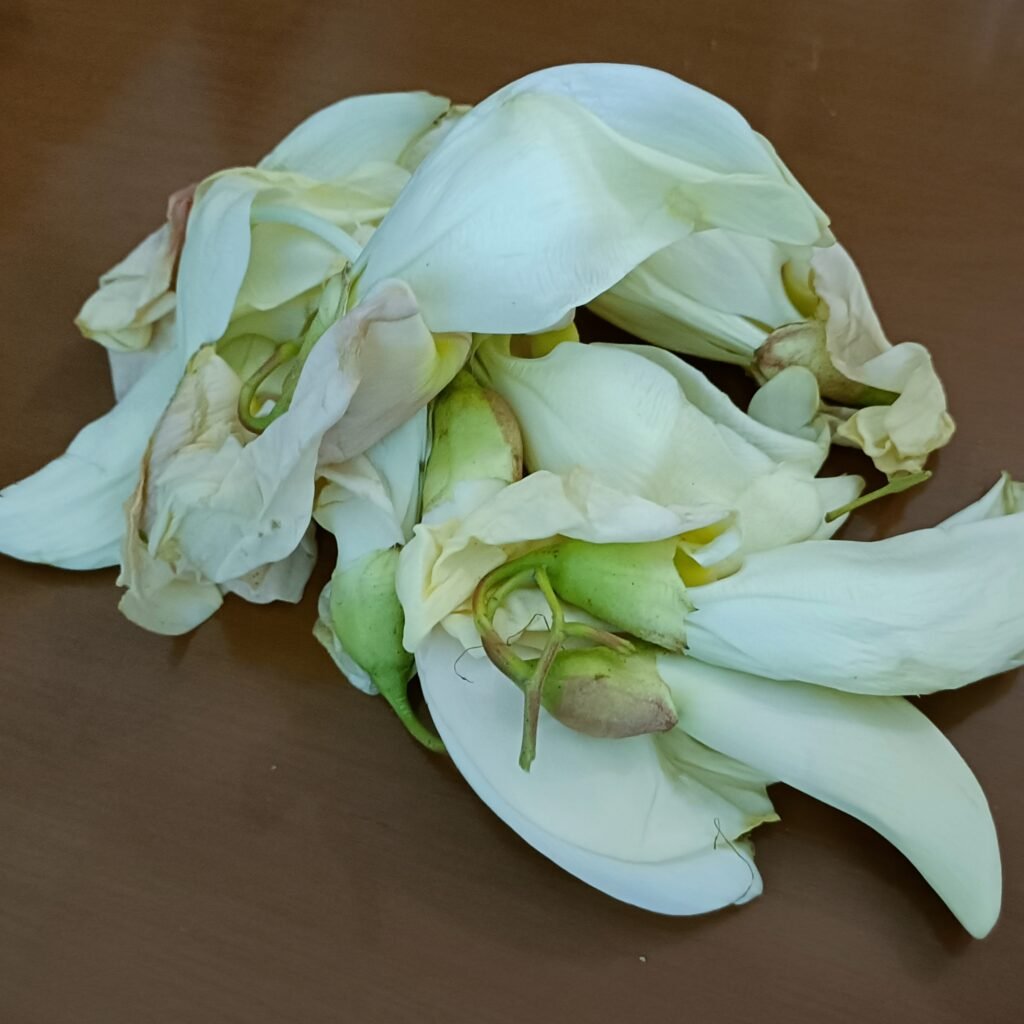
Share this:
- Click to share on Facebook (Opens in new window)
- Click to share on WhatsApp (Opens in new window)
- Click to share on Twitter (Opens in new window)
- Click to share on Pinterest (Opens in new window)
- Click to share on LinkedIn (Opens in new window)
- Click to share on Skype (Opens in new window)
- Click to share on Reddit (Opens in new window)
- Click to share on Tumblr (Opens in new window)
- Click to share on Pocket (Opens in new window)
- Click to share on Telegram (Opens in new window)
- Click to print (Opens in new window)

